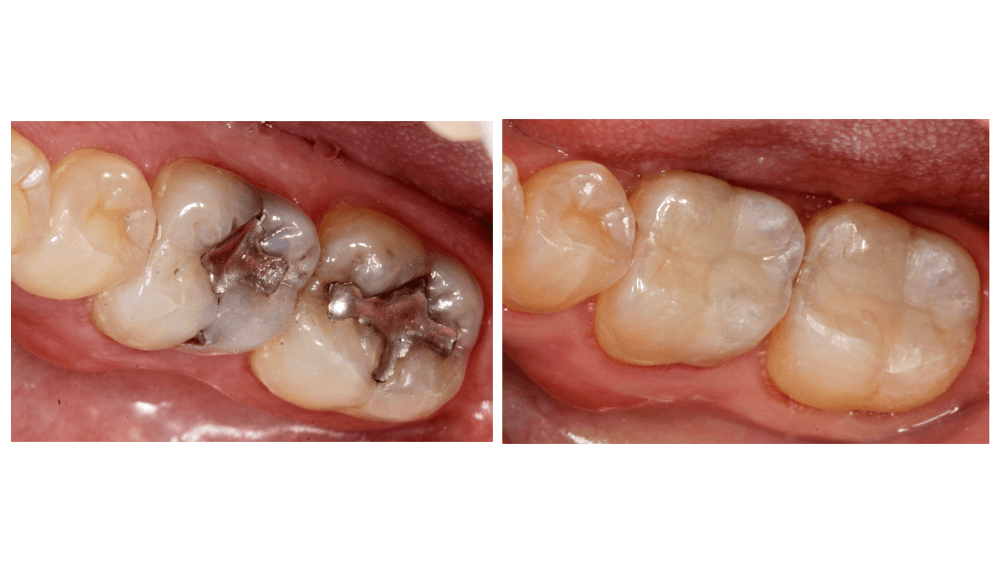Amalgam fillings, commonly referred to as silver fillings, have been a standard in dental care for many years due to their durability and cost-effectiveness. However, as dental technology advances and concerns about mercury content grow, many people are considering replacing these fillings with more modern alternatives. This blog explores the factors involved in deciding whether to replace amalgam fillings and the options available.
Understanding Amalgam Fillings
What Are Amalgam Fillings?
Amalgam fillings are a type of dental filling made from a mixture of metals, including mercury, silver, tin, and copper. They are known for their strength and ability to withstand the forces of chewing, making them a popular choice for molar restorations.
Composition and Typical Lifespan
Comprising approximately 50% mercury, amalgam fillings are durable and can last for many years, typically between 10 to 15 years. Despite their longevity, the mercury content and metallic appearance of these fillings have led some to consider alternative options.
Historical Use and Popularity in Dentistry
Historically, amalgam fillings were widely used due to their strength and affordability. However, with the development of new materials and increased awareness of potential health risks, their popularity has decreased in favour of tooth-coloured options.
Reasons for Replacing Amalgam Fillings
Health Concerns
One of the primary reasons for replacing amalgam fillings is concern over mercury exposure. While major health organisations have stated that the levels of mercury in these fillings are generally safe, some individuals prefer to avoid any potential risks associated with mercury.
Aesthetic Reasons
Amalgam fillings are silver-grey in colour and can be noticeable, especially when smiling or speaking. Many people opt to replace them with tooth-coloured fillings that blend more naturally with their teeth.
Wear and Tear or Damage
Over time, amalgam fillings can wear down, crack, or develop gaps. This deterioration not only affects the filling itself but can also lead to further tooth decay or damage, necessitating replacement.
Advancements in Dental Materials and Technology
The development of materials like composite resins and ceramics has provided patients with more aesthetically pleasing and safer alternatives. These modern materials can match the natural colour of teeth and do not contain mercury.
Types of Replacement Options
Composite Fillings
Composite fillings are made from a resin material mixed with glass particles. They are tooth-coloured and can be precisely matched to the shade of your natural teeth, making them a popular choice for visible areas.
Ceramic Fillings
Ceramic fillings, often made of porcelain, offer a natural appearance and are resistant to staining. They are durable and can be an excellent option for patients seeking a long-lasting and aesthetically pleasing solution.
Gold Fillings
Although less common today, gold fillings are known for their durability and longevity. They are often used in cases where strength and longevity are critical, though they are more noticeable and can be more expensive.
Overview of Advantages and Disadvantages
Each type of filling material has its pros and cons. Composite and ceramic fillings provide a natural look and are mercury-free, but they may be more expensive than amalgam. Gold fillings are extremely durable but can be costly and visually distinct.
Factors to Consider Before Replacement
Condition of the Existing Filling and Tooth
Not all amalgam fillings need to be replaced. The decision should be based on the condition of the filling and the health of the surrounding tooth. A thorough dental examination can help determine whether replacement is necessary.
Cost Implications
The cost of replacing fillings varies depending on the material and the complexity of the procedure. Discussing these costs with your dentist can help you understand the financial aspects of your decision.
Procedure Involved
Replacing amalgam fillings involves removing the old material, which can expose mercury vapour. Dentists use specific procedures to minimise this exposure and ensure patient safety.
Potential Risks or Complications
As with any dental procedure, replacing fillings carries potential risks, such as tooth sensitivity or structural damage. It is important to consider these risks and discuss them with your dentist.
Consultation and Decision-Making Process
Importance of Consulting with a Dentist
Consulting with a dentist is crucial for understanding whether replacing your amalgam fillings is the best option. A professional assessment can provide insight into the condition of your fillings and overall oral health.
Assessing Necessity and Timing
Your dentist will help you assess whether the replacement is necessary immediately or can be planned for a later date. This decision will depend on the condition of the fillings and any symptoms you may be experiencing.
Evaluating Personal and Medical Reasons
Personal preferences, aesthetic considerations, and health concerns all play a role in the decision to replace fillings. Discussing these factors with your dentist can help ensure that your decision aligns with your overall health and dental goals.
Understanding the Dentist’s Recommendations
Your dentist may recommend specific materials or procedures based on your needs. For those looking to replace amalgam fillings in Lane Cove, it’s important to understand these recommendations and how they align with your preferences and health needs.
Post-Replacement Care
Caring for New Fillings
Proper care is essential to ensure the longevity of your new fillings. This includes maintaining good oral hygiene practices, such as regular brushing and flossing, and avoiding foods that could damage the fillings.
Regular Dental Check-ups
Regular check-ups are crucial for monitoring the condition of your fillings and overall oral health. These visits help catch any potential issues early, allowing for prompt treatment and maintaining the longevity of your dental work.
Lifestyle and Dietary Considerations
Certain habits, like grinding your teeth or consuming hard foods, can affect the longevity of your fillings. Your dentist can provide advice on protecting your fillings and maintaining your overall dental health.
Final Words
Replacing amalgam fillings is a personal decision that involves weighing various factors, including health concerns, aesthetic preferences, and cost considerations. Consulting with a dentist is the best way to understand your options and make an informed decision.
Keep an eye for more news & updates onBiscoverTribune.Org!




